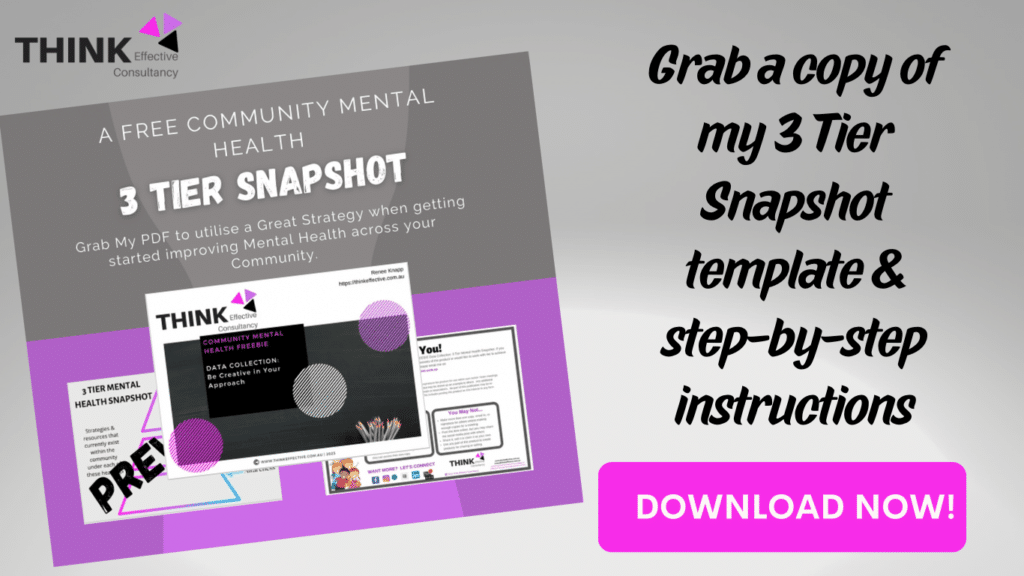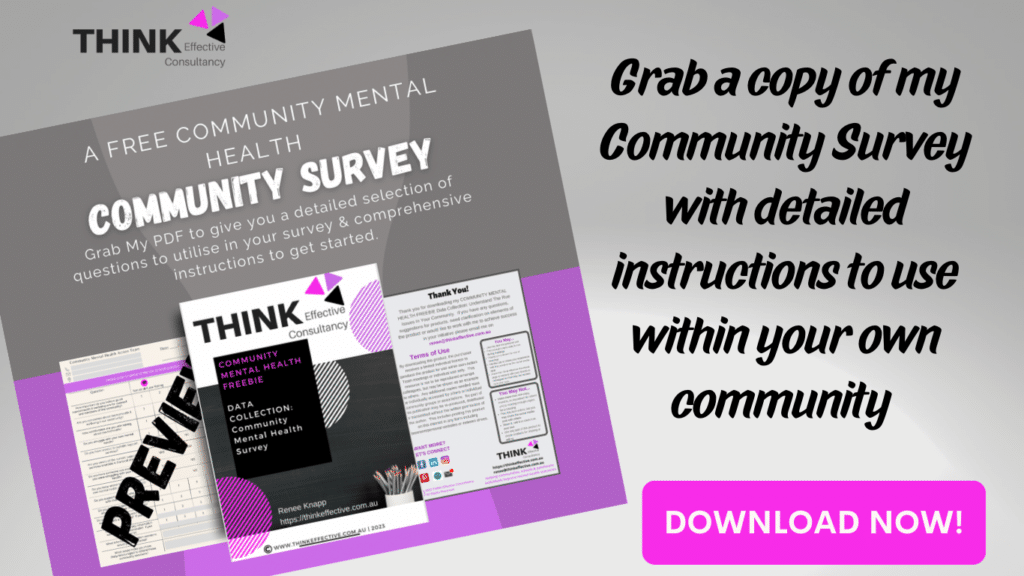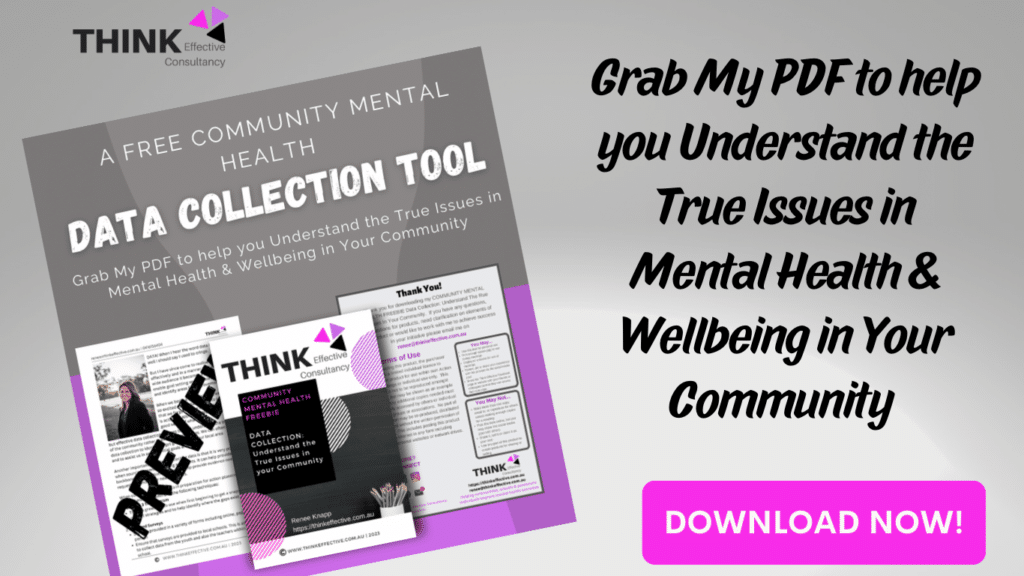So hopefully now you have a good understanding of the benefits of data and an understanding of the importance of making data practical, engaging and meaningful after reading my last post on Data Collection: Reasons For & What To Collect
Today I am going to go through some specific strategies that you can use to collect community mental health data in more detail. I will explain the process for each and you can download the FREE resource available on this post to get started with your action team.
Whilst there are many strategies that I can suggest for data collection, I am going to talk about 2 specific strategies that are great to start using immediately and are fairly easy to implement.
A place to start when you have formed your action team it to collect a 3 Tier Snapshot. This involves collecting information on what is currently happening across the community in mental health with regards to
The team can start to identify these things but this provides a great oppportunity for the team to either get out and chat to the community about what is happening or send a series of questions to organisations/businesses to ask them what they currently do in each space.
STEP 1 Brainstorm as a team what you think is currently being done in each area across the community
STEP 2 Decide as a team how to get more information from the community to feed into the Tiered Diagram
STEP 3 If choosing to collect information informally through conversations, allocate each member of the team a group of organisations and set a timeframe for data collection. Team members go to each organisation and ask them 3 questions eg. “What do currently do in your organisation to raise awareness of mental health and issues?”
STEP 4 If collecting information formally through online questions, use a platform such as Microsoft Forms or Survey Monkey to send out to organisations. This will collate the information for you. However the challenge with this is to make a plan to follow up to ensure you receive forms or surveys back.
STEP 5 Collate information and add to 3 Tier Diagram. Share this information with community as a snapshot of current practices in mental health. It is a great starting point for conversations and goal setting.
# You can also complete a similar activity with protective (reduce the likelihood of poor mental health) and risk factors (increase the likelihood of poor mental health) in your local community.

We have to be careful with surveys as people are time poor and will often overlook a survey when it is sent with completion rates often very disappointing. However if we add a little creativity we can get surprisingly good results.
STEP 1 As an action team consider what questions to include on your survey?
(Download free resource below for a selection of sample questions to ask in survey)
STEP 2 Launch survey on social media, in person, via email and through any other available platforms. Do this rather than just adding it on with little consideration.
STEP 3 Ensure that you include schools in the survey. If possible ask someone within the school to carry out the survey at a staff meeting/during classes to ensure that all staff and students have a chance to complete the survey
STEP 4 Break survey into individual questions to ask on social media or as a slip to hand out at large gatherings with a ballot type box for collection.
STEP 5 Ask local businesses for a prize donation to use for the first survey completed or a random drawer for anyone who completes the survey
STEP 6 Ask govt organisations for data that may be useful to action team in decision making.
STEP 7 Collate information and use to make some initial goals and targets
STEP 8 Share results or goals/targets with community to help build awareness and create a presence for the action team
Please check out the FREE resources you can download with samples of all of the above to get you started.
In an upcoming blog post I will explain the process for creating goals and targets with your team using all of the data you have collected.

DATA! When I hear the word data I cringe – well I should say I used to cringe.
But I have since come to realise that if done effectively and in a manner that appeals to a wide audience it becomes a powerful tool to enable goal setting and measure success and areas for improvement.
When we begin a new initiative, we are often so excited to get started and to see results, that we forget to take time to identify what is really going on. Collecting data gives us the opportunity to identify what is ‘actually happening’. We typically have a good sense of what this is, but effective data collection ensures that we understand the true needs of the community rather than our assumed ones. We can often use this data collection to identify target groups within our local area and to assist us in setting initial goals and targets.
Another important benefit of collecting data is that it is very powerful when sourcing essential funding and grants. It can help provide the backbone for our initiatives and can help provide evidence needed when requesting funding for new initiatives.
When collecting baseline data in preparation for action planning and goal setting I would recommend the following techniques:
In my next blog post I will share examples of each of the data collection strategies that I have mentioned above, and will explain how to utilise each.
